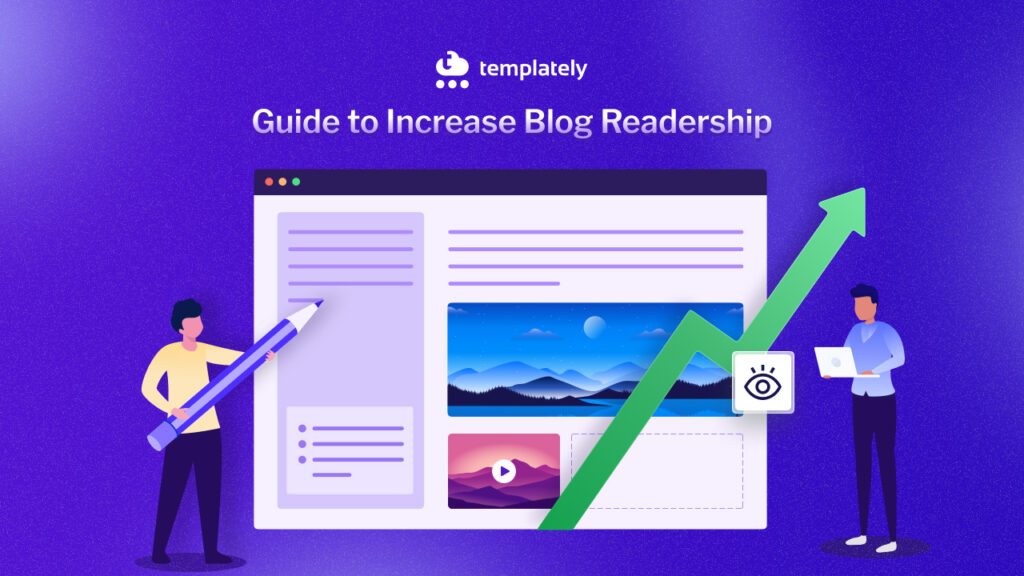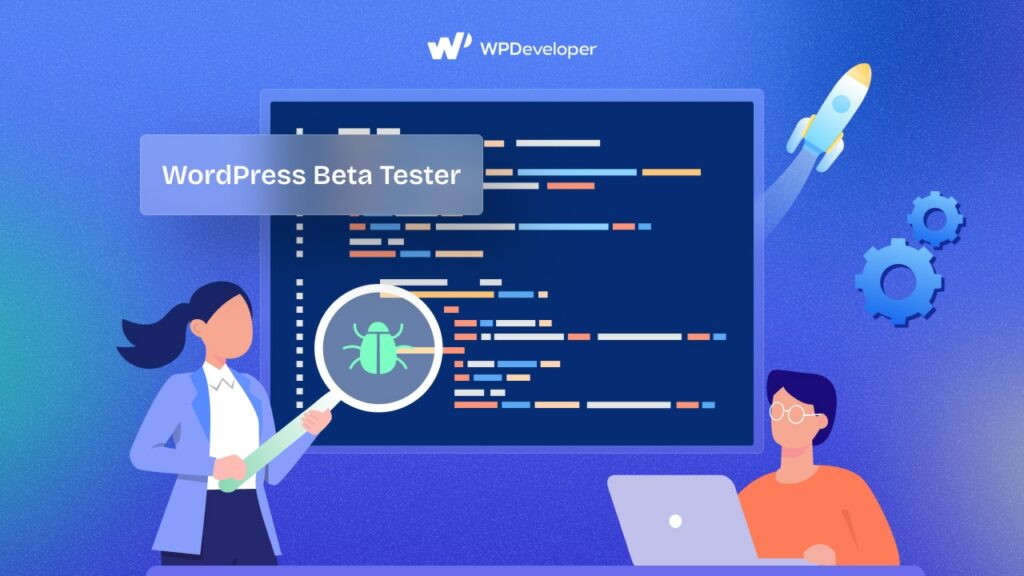Increasing your blog readership is more than just a vanity metric, it is the lifeblood of your blog’s success. A larger audience translates to higher engagement, better monetization opportunities, and increased influence within your niche. Understanding the current scenarios and leveraging the right strategies will be pivotal to increase your blog readership. Let us discuss about some insights to boost your blog’s audience number effectively.

What is Blog Readership?
Before diving into strategies to increase your blog readership, it is essential to understand what “blog readership” actually means. Blog readership refers to the number of individuals who regularly visit and engage with your blog. This audience is not just defined by the number of page views or visitors but by the consistent and active engagement of readers who find value in your content. There are some key components of blog readership
- Unique Visitors: These are individual users who visit your blog over a specific period. Each unique visitor is counted only once, regardless of how many times they visit during that time frame.
- Page Views: This metric tracks the total number of pages viewed by visitors. While it gives an idea of how engaging your content is, a high number of page views combined with low unique visitors could indicate repeat visits from the same users.
- Engagement: Engagement measures how readers interact with your content—through comments, shares, likes, or even time spent on the page. High engagement often indicates that readers find your content valuable and are more likely to return.
- Returning Visitors: These are visitors who come back to your blog after their initial visit. A high percentage of returning visitors often signals that your content is resonating well with your audience.
- Bounce Rate: Bounce rate refers to the percentage of visitors who leave your blog after viewing only one page. A high bounce rate might suggest that your content is not compelling enough or that the user experience needs improvement.
- Subscribers: These are readers who have opted in to receive regular updates from your blog, typically through email subscriptions. Subscribers are often your most loyal readers and are crucial for sustained readership growth.
How to Increase Your Blog Readership?
Increasing your blog readership requires a multifaceted approach that combines quality content, effective marketing, and a deep understanding of your audience. Here are some key strategies to help you grow your readership in 2025:
Understanding Your Audience
Before diving into specific strategies to increase your blog readership, it is crucial to understand who your audience is. Knowing your audience’s interests, preferences, and online behavior can significantly influence the type of content you produce and how you promote it. Conduct thorough audience research through surveys, analytics tools, and social media insights to gather data about your readers. Create detailed audience personas that encapsulate their demographics, challenges, and goals. This foundational step ensures that all subsequent efforts are tailored to meet the actual needs and interests of your readers.
Optimizing Your Blog for SEO
Search Engine Optimization (SEO) remains one of the most effective ways to increase blog traffic. By optimizing your content for search engines, you ensure that your blog appears higher in search results, making it more likely to attract organic visitors. Here are some key SEO strategies to implement:

- Keyword Research: Identify relevant keywords and phrases that your audience is searching for. Use tools like Google Keyword Planner, SEMrush, or Ahrefs to find keywords with high search volume and low competition. Ensure you integrate these keywords naturally into your blog posts, titles, headers, and meta descriptions.
- On-Page SEO: Optimize individual blog posts by including your primary keyword in the title, URL, first paragraph, and subheadings. Use LSI (Latent Semantic Indexing) keywords throughout the content to enhance relevance. Ensure your blog is mobile-friendly and has a fast loading speed, as these factors impact SEO rankings.
- Internal Linking: Create a robust internal linking structure to help search engines understand the hierarchy of your content. Link to relevant posts within your blog to keep readers engaged and improve page authority.
- Quality Content: High-quality, informative, and engaging content naturally attracts backlinks, which are crucial for SEO. Aim to create content that provides value, answers questions, and solves problems for your readers.
Leveraging Social Media
Social media platforms are powerful tools for increasing your blog readership. By promoting your content on various social media channels, you can reach a broader audience and increase blog traffic back to your blog. Here is how to make the most of social media:
- Platform Selection: Choose the right platforms based on where your audience is most active. Popular choices include Facebook, Twitter, LinkedIn, Instagram, and Pinterest. Tailor your content and strategy to suit each platform’s unique features and user behavior.
- Consistent Posting: Develop a consistent posting schedule to keep your audience engaged. Use social media management tools like Hootsuite, Buffer, or Sprout Social to plan and automate your posts.
- Engage with Followers: Respond to comments, join conversations, and engage with your followers to build a community around your blog. Encourage readers to share your content and participate in discussions.
- Visual Content: Use eye-catching visuals, such as images, infographics, and videos, to make your social media posts more appealing. Visual content tends to get more engagement and shares, increasing the reach of your blog posts.
Email Marketing
Building and nurturing an email list is a highly effective way to maintain a direct line of communication with your readers. With email marketing, you can keep your audience informed about new posts, updates, and exclusive content, driving consistent traffic to your blog.

- Lead Magnets: Offer valuable incentives, such as free e-books, checklists, or access to exclusive content, in exchange for email sign-ups. Ensure that your lead magnets are relevant to your blog’s niche and audience interests.
- Segmentation: Segment your email list based on readers’ interests, behaviors, and demographics to send targeted content. Personalized emails have higher open and click-through rates, making your campaigns more effective.
- Automated Campaigns: Set up automated email sequences to welcome new subscribers, nurture leads, and re-engage inactive readers. Use email marketing tools like Mailchimp, ConvertKit, or ActiveCampaign to streamline your campaigns.
- Compelling Content: Craft engaging and valuable email content that resonates with your audience. Include links to your latest blog posts and encourage readers to share your emails with their networks.
Content Strategy
A well-defined content strategy is the backbone of a successful blog. By planning and organizing your content, you can ensure consistency, relevance, and quality. Here are some essential elements of an effective content strategy:
- Content Calendar: Create a content calendar to plan your blog posts in advance. This helps you maintain a regular posting schedule and ensures a diverse mix of content types and topics.
- Content Types: Experiment with different content formats, such as how-to guides, listicles, interviews, case studies, and opinion pieces. Variety keeps your blog interesting and caters to different reader preferences.
- Evergreen Content: Focus on creating evergreen content that remains relevant and valuable over time. Evergreen posts continue to attract traffic long after they are published, providing a steady stream of readers.
- Content Upgrades: Enhance your blog posts with content upgrades, such as downloadable resources or additional insights, to provide extra value and encourage email sign-ups.
Collaboration And Guest Posting
Collaborating with other bloggers and influencers in your niche can significantly expand your reach and increase your blog readership. Here is how to leverage collaboration and guest posting:
- Guest Blogging: Write guest posts for reputable blogs in your niche to reach a new audience. Ensure your guest posts are high-quality and include a link back to your blog.
- Inviting Guest Bloggers: Invite influential bloggers to write guest posts on your blog. This not only provides fresh content for your readers but also brings the guest blogger’s audience to your site.
- Collaborative Projects: Partner with other bloggers or influencers for joint projects, such as webinars, podcasts, or e-books. Collaborative efforts can amplify your reach and attract more readers to your blog.
- Networking: Attend industry events, webinars, and online forums to network with other bloggers and influencers. Building relationships within your niche can lead to valuable collaborations and opportunities for growth.
Analyzing And Adapting Your Strategy
To ensure your efforts to increase blog readership are effective, it is crucial to continually analyze your performance and adapt your strategy as needed. By understanding what works and what does not, you can refine your approach and achieve better results. Here is how to do it:
Monitoring Key Metrics
Track essential metrics to gain insights into your blog’s performance. These metrics provide valuable data that can inform your strategy adjustments. Key metrics to monitor include:

- Traffic Sources: Identify where your traffic is coming from, such as organic search, social media, direct visits, or referrals. Understanding your primary traffic sources helps you focus your efforts on the most effective channels.
- Bounce Rate: The bounce rate indicates the percentage of visitors who leave your blog after viewing only one page. A high bounce rate may suggest that your content isn’t engaging or relevant. Aim to keep your bounce rate low by creating compelling content and improving user experience.
- Average Session Duration: This metric shows how long visitors stay on your blog. Longer sessions indicate that readers find your content valuable and engaging. Focus on creating in-depth, high-quality content to increase session duration.
- Page Views: Track the number of page views to understand which posts are the most popular. Use this data to create similar content that resonates with your audience.
- Conversion Rates: Measure how many visitors take desired actions, such as subscribing to your email list or downloading a lead magnet. High conversion rates indicate that your calls to action are effective.
Using Analytics Tools
Utilize analytics tools to gather and interpret data about your blog’s performance. Some popular tools include:
- Google Analytics: Provides comprehensive insights into your blog’s traffic, user behavior, and conversions. Set up goals and custom reports to track specific metrics.
- SEMrush: Offers in-depth analysis of your blog’s SEO performance, including keyword rankings, backlinks, and site audits. Use SEMrush to identify areas for improvement and track your progress.
- Ahrefs: A powerful tool for analyzing your blog’s backlink profile, keyword rankings, and competitor performance. Ahrefs can help you discover new content opportunities and optimize your SEO strategy.
Adapting Your Content Strategy
Based on your analysis, make data-driven adjustments to your content strategy. Here are some ways to adapt and improve:

- Identify Top-Performing Content: Analyze which posts generate the most traffic, engagement, and conversions. Create more content on similar topics or expand on successful posts to provide additional value.
- Update And Repurpose Content: Regularly update older posts with fresh information and new insights. Repurpose high-performing content into different formats, such as videos, infographics, or podcasts, to reach a broader audience.
- A/B Testing: Conduct A/B tests on headlines, calls to action, and email subject lines to determine what resonates best with your audience. Use the results to refine your approach and improve engagement.
- Optimize for User Experience: Ensure your blog is user-friendly, with easy navigation, fast loading times, and a mobile-responsive design. A positive user experience encourages readers to stay longer and explore more content.
Engaging with Your Community
Building a loyal readership involves more than just attracting visitors; it is about creating a community of engaged readers who return to your blog regularly. There are some strategies to foster community engagement that you can follow:
- Respond to Comments: Actively engage with readers by responding to comments on your blog posts. Show appreciation for their feedback and encourage further discussion.
- Create Interactive Content: Incorporate interactive elements, such as polls, quizzes, and surveys, to involve your readers and make your blog more engaging.
- Host Live Events: Host webinars, live Q&A sessions, or virtual meetups to interact with your audience in real-time. These events provide valuable opportunities for direct engagement and relationship building.
- Encourage User-Generated Content: Invite your readers to contribute guest posts, share their stories, or participate in challenges. Featuring user-generated content not only provides fresh perspectives but also strengthens your community.
Promoting Your Blog
Effective promotion is key to increasing your blog readership. Beyond SEO and social media, explore additional promotional strategies to boost your blog’s visibility:
- Influencer Outreach: Collaborate with influencers in your niche to promote your blog. Influencers can help you reach a wider audience and lend credibility to your content.
- Paid Advertising: Invest in paid advertising, such as Google Ads, Facebook Ads, or Instagram Ads, to drive targeted traffic to your blog. Set clear objectives and track the performance of your campaigns to ensure a positive return on investment.
- Content Syndication: Syndicate your blog posts on platforms like Medium, LinkedIn, and industry-specific websites to reach a broader audience. Ensure you include links back to your original content to drive traffic to your blog.
- Networking: Attend industry conferences, webinars, and networking events to connect with other bloggers and professionals in your field. Building relationships can lead to collaborative opportunities and increased exposure for your blog.
Maintaining Consistency
Consistency is crucial in building and retaining a loyal readership. For maintaining the consistency there are many important things that you can consider. You can checkout some tips to maintain consistency in your blogging efforts:
- Stick to a Posting Schedule: Determine a realistic posting schedule and stick to it. Whether it is once a week or once a month, consistent posting keeps your audience engaged and coming back for more.
- Quality Over Quantity: Focus on creating high-quality content rather than churning out numerous posts. Quality content that provides value to your readers is more likely to attract and retain an audience.
- Stay True to Your Brand: Maintain a consistent voice, tone, and style across all your blog posts. A cohesive brand identity helps build trust and recognition among your readers.
- Regularly Review Your Strategy: Periodically review your blogging strategy to ensure it aligns with your goals and audience needs. Be open to making adjustments based on feedback and performance data.
Utilizing Multimedia
Incorporating multimedia elements into your blog can significantly enhance reader engagement and increase your blog readership. Here are some ways to utilize multimedia:
- Images: Use high-quality images to break up text and make your posts visually appealing. Optimize images for SEO by using descriptive filenames and alt text.
- Videos: Create and embed videos to provide visual explanations, tutorials, or behind-the-scenes content. Videos are highly engaging and can help convey complex information more effectively.
- Infographics: Design infographics to present data and information in a visually engaging format. Infographics are shareable and can drive traffic from social media and other websites.
- Podcasts: Launch a podcast to reach a different segment of your audience who prefer audio content. Promote your podcast on your blog and include show notes and transcripts to enhance SEO.
Take Proper Strategy & Increase Your Blog Readership
Increasing your blog readership in 2025 requires a multifaceted approach that combines high-quality content, effective SEO, active engagement, and strategic promotion. By understanding the metrics and taking necessary steps you can build a loyal and growing readership. You can stay committed to providing value, staying updated with trends, and continuously refining your strategies based on data and feedback. With these practices, your blog can achieve sustained growth and success in 2024 and beyond.
If you want to read more exciting blogs like this, subscribe to our blogs and join our Facebook community. Enjoy!









